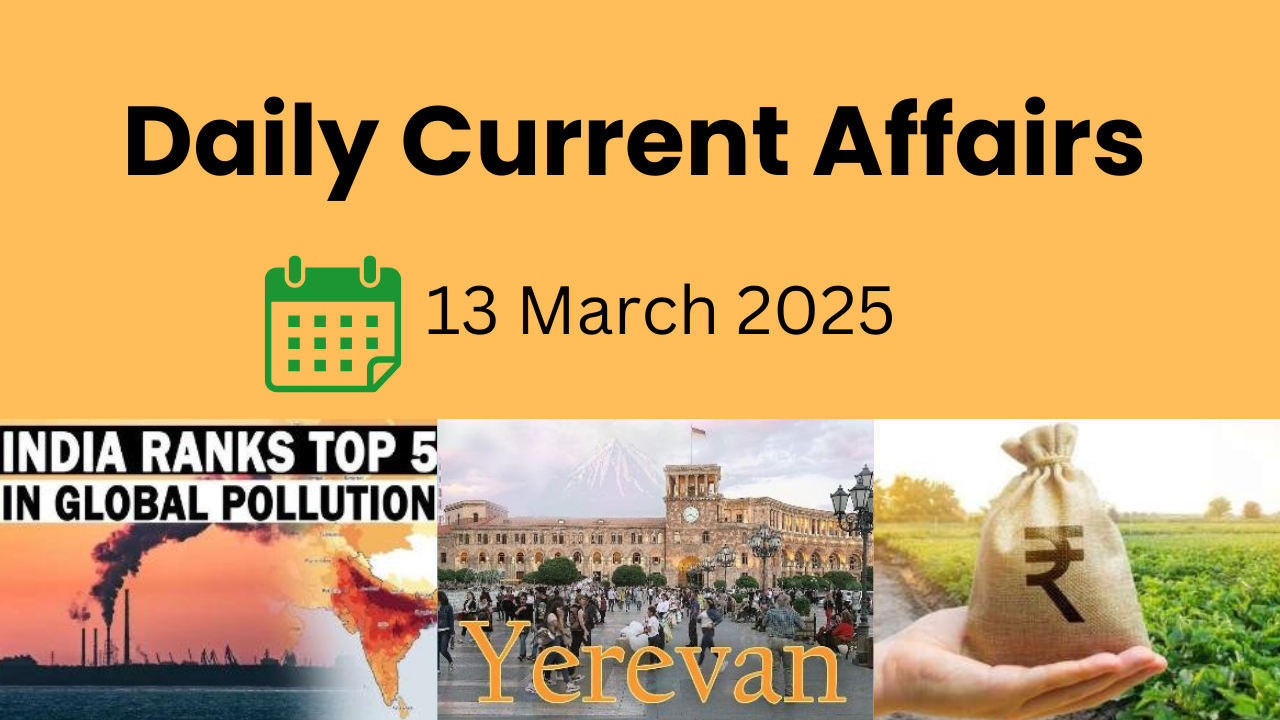1. Farm Lending Crisis: Surge in Kisan Credit Card Bad Loans
Context: Recent data reveals a 42% surge in bad loans under the Kisan Credit Card (KCC) scheme over the past four years, reflecting severe financial distress in the agricultural sector.
Understanding the Kisan Credit Card (KCC) Scheme:
Introduction:
Launched in 1998 based on recommendations from the R.V. Gupta Committee, the KCC scheme provides short-term credit to farmers for agriculture and allied activities.
Key Features:
- Issued by: Commercial banks, cooperative banks, and regional rural banks
- Purpose: Covers costs related to crop production, including seeds, fertilizers, and pesticides
- Additional Uses: Supports working capital needs for dairy, poultry, fisheries, and farm machinery
- Post-Harvest Expenses: Can be used for irrigation, storage, and other post-harvest activities
- NPA Classification: A KCC loan is considered a non-performing asset (NPA) if unpaid within three years
What Are Non-Performing Assets (NPAs)?
Definition:
NPAs refer to loans where the principal or interest remains overdue for more than 90 days.
Types of NPAs
- Substandard Assets: Loans overdue for up to 12 months
- Doubtful Assets: Loans overdue for more than 12 months
- Loss Assets: Loans deemed unrecoverable by the bank or RBI
RBI Guidelines for Agricultural NPAs:
- Short-term crop loans are classified as NPAs if unpaid for two crop seasons
- Long-term agricultural loans become NPAs after one crop season
Current Trends in Agricultural NPAs:
- As per RBI data, outstanding NPAs in KCC accounts of scheduled commercial banks (excluding regional rural banks) jumped from ₹68,547 crore (March 2021) to ₹97,543 crore (December 2024).
- The sharp increase highlights growing challenges in loan repayment among farmers.
Major Causes Behind Rising NPAs in Agriculture:
1. Unpredictable Weather & Climate Change:
- Erratic rainfall, droughts, floods, and temperature shifts significantly impact crop yields.
- Limited insurance coverage forces farmers into loan defaults after crop failures.
2. Low Farm Income & Market Volatility:
- Low productivity, unremunerative prices, and unstable market rates leave farmers struggling financially.
- Lack of assured MSP (Minimum Support Price) for all crops leads to irregular income.
3. Loan Waiver Policies & Moral Hazard:
- Frequent government loan waivers encourage willful defaults, as farmers anticipate future relief.
- This practice erodes repayment discipline and weakens financial stability.
4. Poor Risk Management by Banks:
- Banks sanction loans without adequate risk assessment, increasing chances of defaults.
5. Structural Weakness in Agricultural Finance:
- 86% of India’s farmers are small and marginal, with limited institutional credit access.
- Dependence on informal lenders leads to debt traps and repayment struggles.
6. Delays in Crop Insurance Payouts:
- The Pradhan Mantri Fasal Bima Yojana (PMFBY) faces delays in claim settlements, leaving farmers with no financial backup to repay loans.
Implications of Rising Agricultural NPAs:
1. Stress on the Banking Sector:
- High NPAs restrict fresh loans, slowing down agricultural credit growth.
- Regional Rural Banks (RRBs) and Cooperative Banks face financial instability.
2. Increased Fiscal Burden:
- Government bailouts for banks due to loan waivers strain public finances.
- Resources get diverted from productive rural investments.
3. Rising Economic & Social Distress:
- Indebtedness is a major cause of farmer suicides, particularly in Maharashtra, Karnataka, and Punjab.
- Rural distress worsens, impacting employment and food security.
4. Credit Crunch for Genuine Farmers:
- Due to higher default rates, banks tighten lending norms, making credit inaccessible to honest borrowers.
Conclusion:
The sharp rise in Kisan Credit Card (KCC) NPAs signals a deepening financial crisis in Indian agriculture. Addressing this challenge requires structural reforms, better risk management, and policy interventions to ensure a sustainable agricultural credit system. Empowering farmers through credit access, financial literacy, and climate-resilient practices will be key to reducing loan defaults and ensuring long-term stability.
2. Space-Tech for Good Governance: Transforming Administration Through Innovation
Context: India’s space technology is playing a crucial role in revolutionizing governance, as highlighted by the Minister of Science and Technology at the Good Governance Conclave. With advancements in satellite communication, remote sensing, and geospatial data, space technology is becoming a key enabler for efficient planning, monitoring, and policy implementation.
What is Space Technology?
Space technology refers to scientific advancements and technological applications developed for activities beyond Earth’s surface. These include:
- Earth observation for environmental monitoring
- Satellite communication for seamless connectivity
- Navigation systems for precision mapping
- Exploration missions to expand human reach in space
Governments utilize satellite data, geospatial analytics, and remote sensing to enhance governance, development planning, and disaster management.
India’s Space Economy: Growth & Future Prospects:
Rapid Growth in the Space Sector:
- India’s space economy is expanding rapidly, with its budget tripling and over 300 space startups emerging.
- The sector’s market value is projected to grow from $8 billion to $44 billion, positioning India as a leading global space power.
Ambitious Space Missions:
- Gaganyaan Mission: India’s first human spaceflight trials are set to begin by end of 2025.
- Moon Exploration: India plans to send an astronaut to the Moon by 2040.
- Bharat Antariksh Station: Aiming to establish India’s own space station by 2035.
Applications of Space Technology in Governance:
1. Disaster Management & Response:
- The National Remote Sensing Centre (NRSC) provides satellite imagery to track floods, cyclones, and landslides.
- The National Disaster Management Authority (NDMA) uses satellite data for real-time disaster response and relief efforts.
2. Agriculture & Rural Development:
- FASAL (Forecasting Agricultural Output using Space, Agrometeorology, and Land-based Observations) leverages satellite data to predict crop yields, helping farmers make informed decisions.
- Remote sensing assists in soil health assessment and precision irrigation, boosting farm productivity.
3. Land Management & Governance:
- The Swamitva Yojana uses satellite-based land mapping to create digital land records, ensuring transparency and easy verification in land ownership.
4. Environmental Monitoring:
- Bhuvan (ISRO’s web-based GIS platform) provides real-time environmental data, aiding in land use planning and conservation efforts.
- Oceansat satellites monitor sea surface temperatures, rising sea levels, and coastal erosion, supporting climate adaptation policies.
5. National Security & Defense:
- Satellites enhance border surveillance and monitor strategic locations, strengthening national security.
6. Administrative Efficiency & Digital Governance:
- Satellite data supports the Digital India initiative, improving access to e-governance services, smart city planning, and rural connectivity.
Challenges in Implementing Space Technology for Governance:
- High Costs: Satellite development, launch, and maintenance require significant financial investment.
- Infrastructure & Technical Gaps: Limited ground infrastructure and a shortage of trained personnel in remote areas hinder space technology’s full potential.
- Data Interpretation & Accuracy: Complex satellite data needs precise analysis—errors in interpretation can lead to flawed decision-making.
- Privacy & Security Concerns: Increased use of satellite surveillance raises concerns over citizen privacy and data security.
- Environmental Impact & Space Debris: Frequent satellite launches contribute to space debris, posing risks to future missions and Earth’s orbital environment.
Conclusion:
India’s space technology is reshaping governance and public administration, enabling efficient disaster response, agricultural planning, environmental monitoring, and security. By addressing technical challenges, expanding infrastructure, and promoting sustainable practices, India can harness space-tech for inclusive development and good governance.
3. Armenia: A Land of Ancient Heritage & Strategic Partnerships
Context: Armenia, with its capital Yerevan, is a landlocked nation located in the Transcaucasian region, nestled between Europe and Asia. Known for its rich cultural heritage, breathtaking landscapes, and strategic geopolitical position, Armenia continues to strengthen its international ties, including a recent MoU with India on medical product regulation.
Geopolitical Overview:
Location & Political Boundaries:
Armenia is a landlocked country in the South Caucasus, bordered by:
- Azerbaijan to the east
- Turkey to the west
- Nakhchivan Autonomous Republic (an exclave of Azerbaijan) to the southwest
- Georgia to the north
- Iran to the south
Nagorno-Karabakh Conflict: A Historic Dispute:
- Nagorno-Karabakh, an ethnic Armenian enclave within Azerbaijan, has been a source of conflict since 1988.
- Recent peace agreements have led to a resolution, bringing stability to the region.
Geographical Features:
- Highest Peak: Mount Aragats (Alaghez), standing at 4,090 meters, is the tallest mountain in Armenia.
- Landscape: Dominated by mountains, plateaus, and volcanic terrain, Armenia is often referred to as the “Land of Stones” due to its rocky topography.
- Rivers & Lakes: The Sevan Lake, one of the largest freshwater high-altitude lakes in the world, is a major source of water and biodiversity.
India-Armenia Relations: Strengthening Ties:
Recent MoU on Medical Products Regulation:
- India and Armenia have signed a Memorandum of Understanding (MoU) to enhance cooperation in the regulation of medical products.
- This agreement will improve healthcare collaboration, ensuring quality control, safety, and innovation in pharmaceuticals and medical devices.
Broader Diplomatic & Economic Engagement:
- Defense Cooperation: Armenia has been expanding defense ties with India, including military equipment agreements.
- Trade & Connectivity: Bilateral trade is growing, with Armenia serving as a potential gateway for India’s engagement in the Eurasian region.
- Cultural & Historical Ties: Armenia has one of the oldest Christian civilizations and shares centuries-old historical connections with India, including an Armenian community in Kolkata dating back to the Mughal era.
Conclusion:
Armenia’s strategic location, historical depth, and growing international partnerships make it a key player in the South Caucasus region. With India and Armenia strengthening ties in healthcare, defense, and trade, the future holds promising opportunities for deeper collaboration and regional stability.
4. Rising Consumer Credit in India: A Double-Edged Sword
Context: India’s consumer credit market is expanding at an unprecedented pace, bringing both opportunities and challenges for the economy. The Reserve Bank of India (RBI), in its latest Financial Stability Report (FSR) 2024, has expressed concerns over the rising household debt, particularly the increasing trend of borrowing for consumption rather than asset creation. If not managed carefully, this shift could lead to financial instability in the long run.
Financial Stability Report 2024: Key Takeaways
The FSR 2024 has raised alarms over the rising household debt-to-GDP ratio, which has surged from 36.6% in June 2021 to 42.9% in June 2024.
- India’s household debt remains lower than that of most emerging economies.
- The concern, however, lies in the changing borrowing patterns, with more loans being used for daily consumption rather than investment in assets like homes and businesses.
- This shift poses a macro-financial risk, particularly for lower-income groups, who are increasingly dependent on unsecured credit.
Changing Borrowing Trends: A Shift Towards Consumption Debt
The Evolving Consumer Credit Market:
The RBI’s report highlights two contrasting trends in India’s credit market:
- Positive Development: More loans are being taken by prime and super-prime borrowers, who primarily use credit for asset creation.
- Area of Concern: A significant rise in borrowing for consumption, particularly among low-income borrowers, who often rely on unsecured credit like credit cards and personal loans.
Breakdown of Loan Utilization:
- Super-Prime Borrowers: 64% of their loans are directed towards asset creation (homes, vehicles, education).
- Subprime Borrowers: Nearly 50% of their loans are being used for consumption instead of investments.
- Lower-Income Households (earning below 5 lakh annually):
- Highly dependent on unsecured credit (credit cards, personal loans, and Buy Now, Pay Later (BNPL) schemes).
- Facing rising default rates, suggesting a struggle to manage debt repayments.
This trend implies that many households are borrowing not to build wealth but to sustain their daily expenses, raising concerns about financial distress and long-term economic sustainability.
Rising Consumption Loans: A Threat to Economic Stability?
The increasing reliance on loans for daily expenses rather than long-term investments creates several economic risks:
- Increasing Financial Burden: Defaults on personal loans and credit card debt are on the rise, indicating that many borrowers struggle to meet their repayment obligations.
- Declining Disposable Income: As loan EMIs consume a significant portion of earnings, households have less money to spend on essentials, potentially slowing down overall economic growth.
- Debt Trap Risk: Continuous borrowing for non-productive consumption could push vulnerable households into a cycle of debt, affecting the financial health of banks and NBFCs.
The Macroeconomic Impact of Rising Household Debt:
The impact of household debt on economic growth is complex.
- Positive Impact: If used for productive purposes, such as buying homes or starting businesses, debt stimulates economic activity and wealth creation.
- Negative Impact: If used for daily consumption, excessive borrowing can reduce long-term financial stability and slow down GDP growth.
Key Questions to Consider:
- Is rising consumer credit a result of post-pandemic income insecurity?
- Are financial innovations like BNPL encouraging unsustainable borrowing?
- Will increasing household debt limit the effectiveness of future economic policies such as tax cuts or interest rate adjustments?
RBI’s Response: Regulating Unchecked Credit Growth:
Recognizing the risks associated with excessive consumer borrowing, the RBI has introduced several measures since September 2023 to curb unsecured credit growth:
- Stricter Lending Norms: Higher risk weights on personal loans and credit card borrowings to discourage excessive lending.
- Encouraging Responsible Lending: Banks are advised to prioritize lending to prime borrowers to reduce the risk of defaults.
- Enhanced Supervision: The RBI is closely monitoring financial institutions to prevent reckless lending practices.
These measures have slowed down the growth of consumer credit, but systemic risks remain, requiring continuous policy adjustments.
Conclusion: Striking a Balance Between Growth and Prudence
The rapid rise in consumer credit presents a double-edged sword:
- On one hand, increased access to credit fuels economic activity and supports businesses.
- On the other hand, excessive borrowing for consumption, especially among lower-income groups, could destabilize the financial system.
Way Forward for Policymakers:
- Encourage financial literacy to ensure that borrowers understand the risks of excessive debt.
- Strengthen credit regulations to prevent reckless lending and ensure responsible credit expansion.
- Develop targeted support programs for low-income groups to reduce dependence on high-interest loans.
By maintaining a balanced approach, India can ensure that consumer credit remains a tool for economic growth rather than a source of financial distress.
5. Baloch Separatists Hijack Jaffar Express in Balochistan: A Major Security Crisis
Context: The Balochistan Liberation Army (BLA) carried out a major assault on the Jaffar Express on March 11, 2025, in Balochistan’s Bolan district. The train, en route from Quetta to Peshawar, was hijacked by insurgents who claimed responsibility for:
- Taking 182 passengers hostage
- Killing 20 Pakistani military officers
- Shooting down a Pakistani drone
This marks one of the deadliest attacks by Baloch insurgents in recent years, signaling escalating unrest in the region.
Who is the Balochistan Liberation Army (BLA)?
Origins and Objectives:
The Balochistan Liberation Army (BLA) emerged in the early 2000s as a separatist militant group fighting for Balochistan’s independence from Pakistan.
- Pakistan banned the BLA in 2006
- The U.S. designated it a global terrorist organization in 2019
Tactics and Armed Wings:
The BLA is known for targeting Pakistani security forces, government installations, and foreign entities operating in Balochistan. Its military structure includes:
- Majeed Brigade – A notorious suicide squad active since 2011 and responsible for the Jaffar Express attack
- Special Tactical Operations Squad (STOS), Fatah Squad, and Zirab Units – Key combat divisions involved in insurgency
Rising Threat Level:
- In 2022, the BLA shocked Pakistan by attacking army and navy bases
- It has deployed women suicide bombers, including attacks on Chinese nationals
- In October 2024, the group conducted a suicide bombing that killed two Chinese citizens, opposing foreign investments in Balochistan
With recent moves to unite different Baloch militant factions, experts warn that insurgent activities may escalate further.
Historical Background of the Baloch Insurgency:
A Struggle for Autonomy:
Balochistan, Pakistan’s largest province by area but least populated, has long been at the center of conflict over autonomy and resource control.
- After Pakistan’s independence, Balochistan remained independent until March 1948
- The Khan of Kalat, ruler of key Baloch regions, was forced to sign the instrument of accession under pressure.
Grievances and Unrest:
The ethnic Baloch population has consistently accused Pakistan’s central government of economic exploitation and Punjabi dominance in governance.
- Despite its rich natural resources, Balochistan remains one of Pakistan’s most underdeveloped provinces
- The Baloch insurgency has witnessed multiple uprisings, with each crackdown fueling further resentment and rebellion
Foreign Involvement and Accusations:
- Pakistan accuses India of supporting Baloch insurgents, but India denies these claims
- China’s massive CPEC project has become a key target for militants, who view it as exploitative and damaging to local interests
Why is Balochistan Important?
Strategic and Economic Significance:
Balochistan holds immense geopolitical and economic value, making it a key battleground in regional politics.
China-Pakistan Economic Corridor (CPEC):
- Balochistan is central to China’s $65 billion CPEC project, a part of Xi Jinping’s Belt and Road Initiative (BRI)
- The Gwadar port, located in Balochistan, is China’s gateway to the Arabian Sea, making it a vital economic and military asset
Resource-Rich Province:
- Home to Reko Diq, one of the world’s largest gold and copper reserves, jointly developed by Barrick Gold and China
- Vast deposits of natural gas, coal, and minerals, yet the province remains impoverished
Security Risks & Instability:
- The long-running insurgency has significantly destabilized Pakistan’s plans for economic expansion in Balochistan
- Frequent attacks on security forces, Chinese investments, and energy projects threaten Pakistan’s economic and geopolitical ambitions
Final Thoughts:
The hijacking of the Jaffar Express by the BLA is a stark reminder of Balochistan’s ongoing insurgency and its implications for Pakistan’s national security. With militant factions becoming more organized and lethal, and CPEC investments under threat, the future of Balochistan remains highly uncertain.
6. World Air Quality Report 2024: India Among Top 5 Most Polluted Nations
Context: The World Air Quality Report 2024, released by Swiss air quality technology company IQAir, highlights severe pollution levels worldwide, with India ranking among the top five most polluted countries.
- Byrnihat (Assam) has been declared the most polluted city globally.
- Delhi remains the world’s most polluted capital for the sixth consecutive year.
- India ranks 5th in pollution, an improvement from 3rd place in 2023.
With air quality deteriorating in multiple regions, the report underscores the urgent need for stricter pollution control measures.
World Air Quality Report 2024: Key Takeaways
Extensive Global Analysis:
The report is based on data from over 40,000 air quality monitoring stations across 138 countries, territories, and regions.
IQAir’s air quality scientists analyzed the information to identify major pollution trends and hotspots worldwide.
India’s Alarming Pollution Levels:
Delhi: The Most Polluted Capital Once Again
- Delhi remains the world’s most polluted capital city for the sixth consecutive year.
- While some NCR cities had higher pollution levels earlier, Delhi overtook them as the most polluted urban center in South Asia.
- In 2024, Delhi ranked as the second most polluted city globally.
Byrnihat: The World’s Most Polluted City:
- Byrnihat (Assam) recorded an annual PM2.5 concentration of 128.2 µg/m³, making it the most polluted city worldwide.
- Six Indian cities ranked among the top 10 most polluted cities globally.
Decline in India’s PM2.5 Levels:
- India’s average PM2.5 concentration in 2024 was 50.6 µg/m³, showing a 7% decline from 2023 (54.4 µg/m³).
Major Causes of Pollution in India:
Extreme Pollution Episodes in Northern India:
- January 2024 saw poor air quality in Delhi and Himachal Pradesh.
- November 2024 experienced severe pollution across Delhi, Punjab, Haryana, Chandigarh, and Himachal Pradesh.
Primary Sources of Air Pollution:
- Crop stubble burning – Responsible for 60% of PM2.5 emissions during peak pollution periods.
- Vehicular emissions – A major contributor to urban smog.
- Industrial discharges – Unregulated factory emissions continue to worsen air quality.
- Construction dust – Rising infrastructure projects lead to massive dust pollution.
Air Pollution: A Widespread Global Threat:
World’s Most Polluted Countries (2024 Rankings):
The five most polluted nations, based on annual average PM2.5 levels, are:
- Chad – 91.8 µg/m³
- Bangladesh – 78 µg/m³
- Pakistan – 73.7 µg/m³
- Congo – 58.2 µg/m³
- India – 50.6 µg/m³
Unhealthy Air Quality Across the World:
- Only 12 regions worldwide met the WHO’s safe PM2.5 limit (5 µg/m³), primarily in Latin America, the Caribbean, and Oceania.
- Only 17% of 8,954 cities worldwide complied with WHO’s air quality guidelines.
- The 20 most polluted cities, spanning India, China, Pakistan, Chad, and Kazakhstan, exceeded WHO limits by over 10 times.
Challenges in Controlling Air Pollution & The Road Ahead:
Effectiveness of India’s National Clean Air Programme (NCAP)
- Launched in 2019, NCAP aimed to reduce air pollution levels significantly.
- However, the 2024 report highlights serious implementation challenges, including weak policy enforcement and lack of proper infrastructure.
Urgent Need for Stronger Measures:
- Environmental experts argue that Delhi’s efforts, such as BS-VI fuel standards and advanced transport technology, have not been effectively enforced.
- Regulatory gaps and weak governance continue to allow uncontrolled emissions.
A Call for Systematic Change:
- To achieve long-term air quality improvement, India needs stricter pollution control laws, better enforcement, and investment in green technology.
- Strengthening NCAP and ensuring consistent execution will be critical in combating India’s persistent air pollution crisis.
Final Thoughts:
With India still among the world’s top five most polluted nations, the 2024 Air Quality Report serves as a wake-up call for urgent environmental action.




